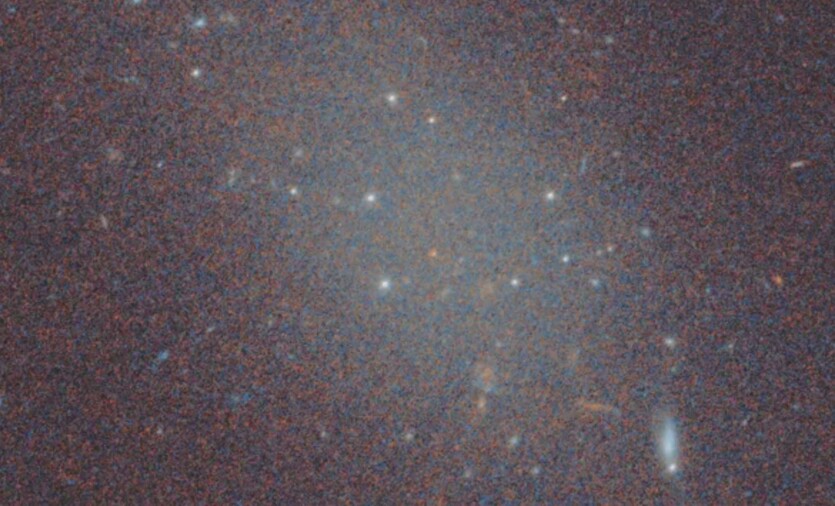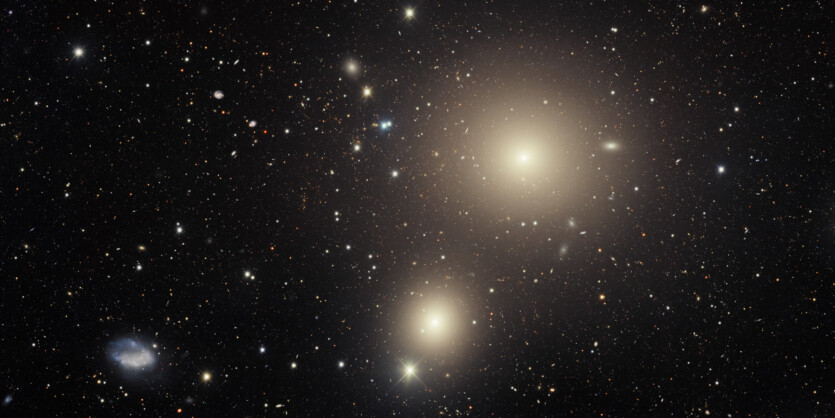
An international team of astronomers has discovered a new ghost galaxy, that does not contain dark matter.
Dark Matter is the elusive substance that most astrophysicists believe makes up most of the Universe. Dark Matter provides gravitational interaction, as well as the merger and expansion of galaxies. Detecting galaxies without dark matter is surprising to astrophysicists. However, over the past 10 years, several such galaxies have been discovered. They all belong to the type of ultradiffuse galaxies with a small number of stars and low luminosity.
A dwarf galaxy called FCC 224 is located at a distance of 65 million light years from Earth. It was first discovered in 2024. It’s special ten bright, very dense star clusters. Usually, such a large number of star clusters can be observed in larger galaxies with a lot of dark matter.

Unlike other similar galaxies, FCC 224 is not located in isolation, but along with other galaxies. Astronomers believe that this indicates a greater prevalence of such galaxies in the Universe.
«None of the existing models of galaxy formation within our standard cosmological model of the evolution of the Universe can currently explain how this galaxy came into being», — says the leader of one of the recent studies, a doctor of astrophysics at the Swinburne University of Technology in Australia, Maria Buzzo.
Using data from the Keck Observatory in Hawaii, Maria Buzzo and a team of astrophysicists tracked the motion of a dozen star clusters within FCC 224. The measurements confirmed the low velocity of the stars in these clusters, which proves that the galaxy does not have a strong gravitational pull. The researchers note that none of the known scenarios can fully explain the properties of FCC 224.
Another group of astronomers led by Yimeng Tan from the University of California, Santa Cruz, compared FCC 224 to other galaxies that may also be missing dark matter. They focused on two galaxies from the NGC 1052 group at a distance of 65 million years from Earth in the constellation Cygnus.
According to astronomers, FCC 224 and the NGC 1052 galaxy could have been formed as a result of a high-speed collision between galaxies with a high gas content. The gas was separated from the dark matter during the collision. Stars began to form in this separated gas, which could have contributed to the formation of several galaxies without dark matter.
Previous studies have shown that two galaxies from the NGC 1052 group, DF2 and DF4, belong to a network of 7-11 galaxies that lack dark matter. They were formed as a result of a single ancient collision FCC 224 probably also has a twin galaxy. One candidate is the neighboring galaxy FCC 240, which is likely to have the same size, shape, and orientation as FCC 224. If future observations confirm similar properties, this will provide crucial evidence in support of the collision scenario and the resulting formation of FCC 224.
Another option assumes that FCC 224 could have formed in a chaotic, high-energy environment, where intense star formation from supermassive star clusters pushed dark matter out of the galaxy.
Source: Space.com; LiveScience

Spelling error report
The following text will be sent to our editors: